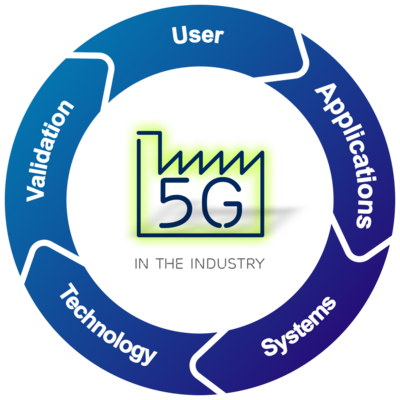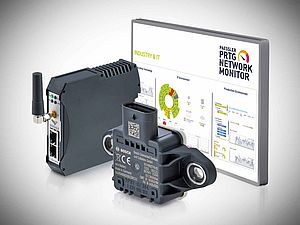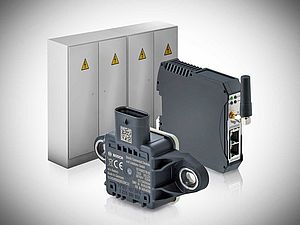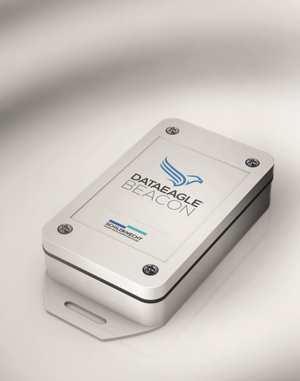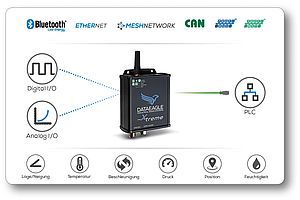To withstand the global competitive pressure in industrial production, companies must accelerate their manufacturing processes and optimize the use of resources. At the same time, they must react quickly and flexibly to individual customer and market requirements. However, flexibility is often limited by optimized processes. What is needed are new processes that make both possible: Cost savings through improved machine utilization and increased flexibility.
To make this possible, 8 partners worked together from March 2017 to November 2020 on a project with the aim of researching and developing an industrial communication concept of 5th generation mobile radio technology (5G). The 8 partners are:
- Ericsson GmbH, Herzogenrath
- Robert Bosch GmbH, Renningen
- Sick AG, Waldkirch
- Schildknecht AG, Murr
- Forschungsinstitut für Rationalisierung (FIR) e. V. an der RWTH Aachen
- Werkzeugmaschinenlabor (WZL) an der RWTH Aachen
- Technische Universität Dresden
- Technische Universität Kaiserslautern
The focus of the project is on the following two aspects:
1. application of 5G radio and network technology in the production
The aim is to adapt manufacturing components quickly and dynamically to different requirements, to design processes accordingly flexible and to enable real-time coordination of production processes.
2. efficient networking of a large number of sensors
Massive sensor networks form the basis for a variety of applications in the context of Industry 4.0 - from detailed condition monitoring of a plant, to predictive maintenance, to the detection of anomalies in the ongoing production. Within the scope of 5GANG, the energy efficiency of wireless sensor nodes is optimized and the real-time capability of such a system is improved.
Virtual, cross-location industrial networks will be connected along the entire value chain based on 5G technology. In the 5GANG project, existing industrial communication solutions are enhanced by 5G technologies in such a way that they are suitable for use in Industry 4.0.
Innovation and perspectives
Virtual, cross-location industrial networks based on 5G allow for better networking of processes along the value chain. At a company's neighboring production sites, urgent orders can be routed efficiently through the production lines without affecting normal operations. This contributes to maintaining the competitiveness of Germany as a production location in international comparison.
Use Cases
Flexible production
The challenges in industrial communication are that the number of sensors and the amount of data is constantly increasing. At the same time, production is to become more flexible, i.e. wireless instead of cable based. However, current solutions via W-LAN are not sufficiently reliable. At the beginning of the project there were no commercial 5G products available, so that the project worked with 5G Ready products, which are quasi the precursors of 5G products. This use case tests to adapt the production as much as possible to changed customer requirements at short notice.
Continuous freight forwarding for horizontal synchronization in the value chain. Extension of wired standard automation solutions by 5G radio solutions. The AGV control system is extended and optimized by sensors in the infrastructure. The following aspects are examined in particular: Extension of wired standard automation solutions by 5G wireless solutions. A continuous goods traffic for horizontal synchronization in the value chain. AGV control extension and optimization through sensors in the infrastructure.
Distributed Sensing & Control
In the factory floor application environment, the aggregation of massive sensor data requires efficient connection and networking of many sensors. It was about the question of how data can be flexibly routed, signal sources can be separated for analysis and efficiently aggregated for further processing. The TU Dresden focused on the area of networking. Bosch focused on the use case Predictive Maintenance based on audio data as a basis.
Technological background
Campus networks
Germany is a pioneer in the design of local/regional 5G networks. Local and regional frequencies in the range of 3,700 to 3,800 MHz can be applied for and operated for 5G applications independently of network operators.
Virtualisation
In 5G, the increasing "softwareification" or virtualization in the area of network infrastructure will play a major role. Software Defined Network (SDN) and Network Function Virtualization (NFV) are further key features of 5G. The 5G infrastructure will bring together the basic information technology resources, storage and computing power, through its high-performance network architecture and offer it to other application-specific functional areas.
Massive Sensor Networks
In Massive Sensor Networks (MSN) today, many sensors are typically connected via an IoT platform. The access to the sensors is typically done via radio to be able to connect many sensors easily. This requires radio access technology and typically IoT Gateways to connect existing sensors to the network. In order to use different transmission technologies, including 5G, existing protocols (e.g. Profibus) are tunneled. Sensor networks also require efficient data transmission, which for example allows an operating time of 10 years.
Research results
The primary goal was to develop an architecture for resilient, industrial communication - based on 5G technology. This was implemented and validated as a demonstrator in the form of a local industrial 5G campus network.
The most important partial results are:
- An architecture for 5G in the industry.
- Transformation of wired sensors and actuators to 5G based sensor systems.
- The integration of industrial solutions into 5G Campus networks.
- Industrial Cloud solution - fast, robust, reliable, local.
- Requirements and use cases for future 5G based industrial production systems.
- Compressed Sensing and Distributed Source Coding, Network Coding for more energy efficient and reliable data transmission in massive sensor networks.
- Direct "Blind Source Separation" as network function for data analysis and monitoring.
- Connectivity of a distributed production environment
- Industrial IoT Gateways for protocol tunneling of standardized fieldbus systems over a 5G campus network.
Further research needs
5Gang focuses on cloud solutions in production. In the future, scenarios in which local and central data centers are networked with each other will become more important, keyword "hybrid cloud systems". There are some important aspects here for which there is still a need for further research:
- Orchestration of the cloud environment
- Operation and maintenance of 5G equipment
- Connection of local data centers/industrial clouds to central data centers
- Connection of private and public 5G networks
- Better aggregation of data from different applications in a local cloud through hardware standardization
Transfer of the project results
The results flow into product development and further research. Ericsson uses the results to define further research projects, in particular to further develop industry compliance. In the long term, one product could be the development of an industry cloud, in which computers unite industrial applications that were previously distributed on different servers.
For Bosch, the algorithms researched in the 5Gang project and their integration into a corresponding platform provide a good foundation for further advancing the research and development of condition monitoring, predictive maintenance and anomaly detection in the context of Industry 4.0.
For Schildknecht, the results offer an optimal opportunity to develop new products and business models and to implement them with the partnerships established.
The results of 5GANG are used in teaching. On the base of 5GANG, cooperation for further research and technology projects were established outside the project, e.g. with the project partners Ericsson and Sick AG or other external partners such as Audi.
Potential for Disruption von 5G
Factories become more flexible through reliable radio communication and through fast integration of public data centers in connection with local data storage. The aggregation of the various applications and data of a local cloud is simplified by standardizing the hardware / software.
Whether 5G can become a game changer depends on the angle of view. Disruptions or changes in markets often occur when new developments lead to high cost savings or high profit opportunities or are very convincing solutions and these developments are available for a mass market. Related to 5G, a disruption for the mass market is more likely to last. However, since 5G plays a role worldwide, it offers the potential to be available as a low-cost standard technology in the future.
2G - has promoted mobile voice, 3G music streaming, 4G video streaming. 5G will primarily enable industry applications such as real-time cloud applications augmented reality (AR) / virtual reality (VR) with a disruptive potential, as 5G campus networks will also provide the legal framework.
Example: Radio control of trucks used in dangerous places in mines can help to protect employees.
By Martin Stümpert, Project Lead & Contact at Ericsson


